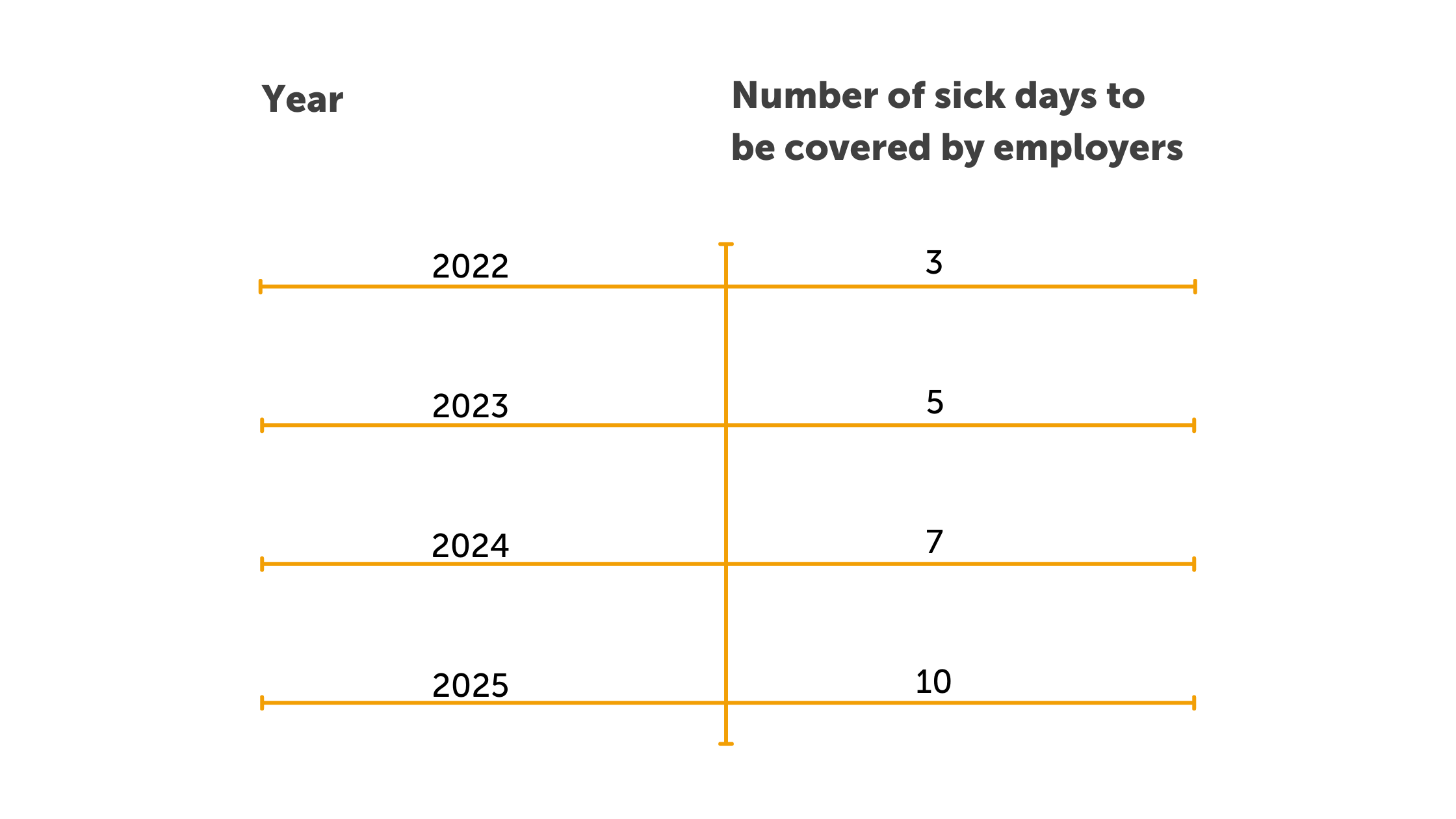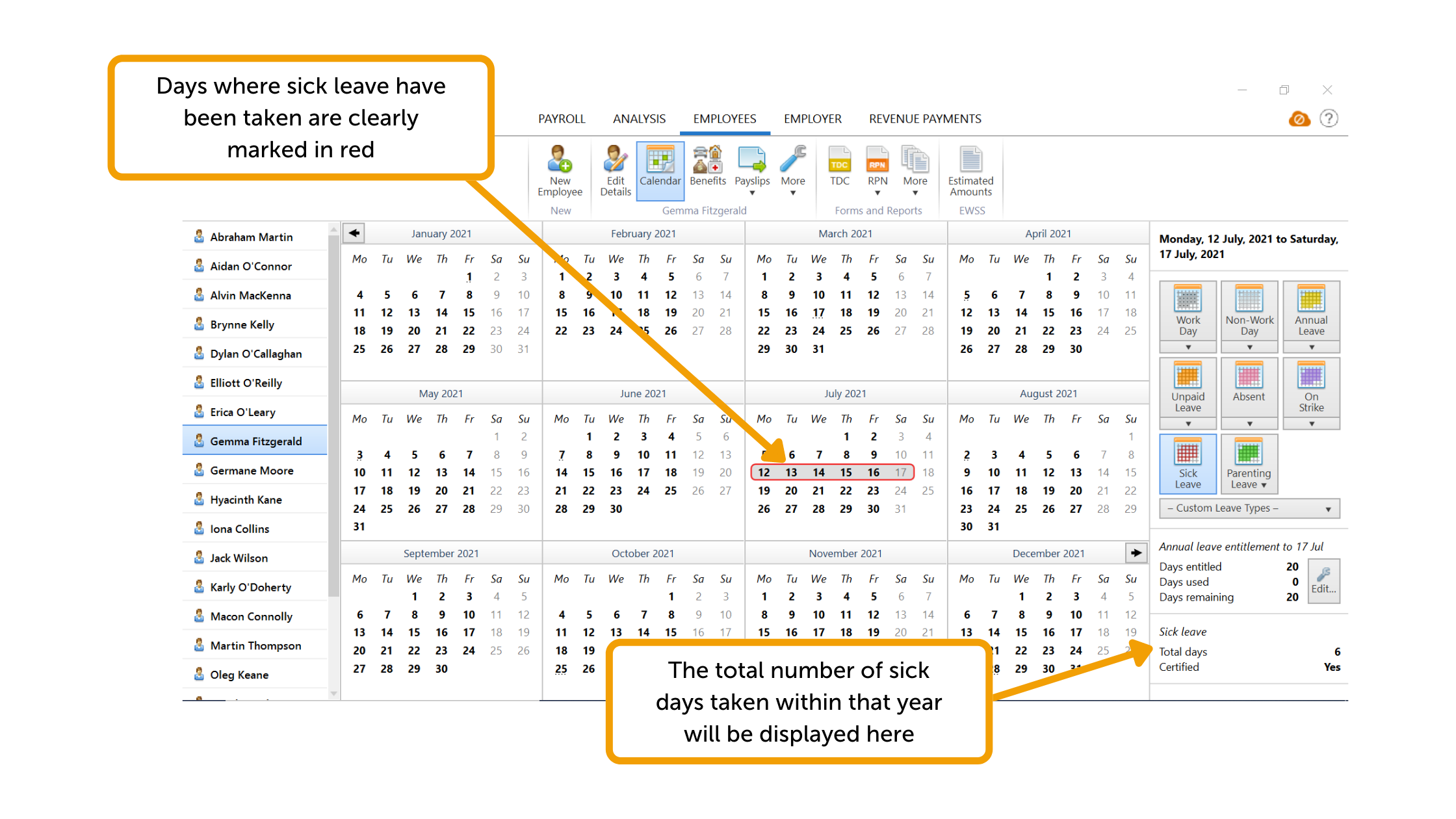Sep 2022
28
Budget 2023 - An employer focus
On 27th of September 2022, Minister for Finance, Paschal Donohoe, and Minister for Public Expenditure and Reform, Michael McGrath, presented the 2023 budget. Minister McGrath called the budget a “Cost of Living Budget”, and said it was focused on helping individuals, families and businesses deal with rising prices.
Below, we've listed some of the measures from the budget which will most affect employers.
Income Tax
There are no change to tax rates for 2023, the standard rate will remain at 20% and the higher rate at 40%.
• The Standard Rate Cut Off Point (SRCOP) has been increased by €3,200 from €36,800 to €40,000
• The Personal Tax Credit increased by €75 from €1,700 to €1,775
• The Employee Tax Credit increased by €75 from €1,700 to €1,775
• The Earned Income Credit increased by €75 from €1,700 to €1,775
• The Home Carer’s Tax Credit will increase by €100
Universal Social Charge (USC)
• Exemption threshold remains at €13,000
• There are no changes to the rates of USC
• The 2% USC rate band has increased by €1,625, from €21,295 to €22,920
USC Rates & Bands 2023
• €0 – €12,012 @ 0.5%
• €12,013 – €22,920@ 2%
• €22,921 – €70,044 @ 4.5%
• €70,045 + @ 8%
Medical card holders and individuals aged 70 years and older whose aggregate income does not exceed €60,000 will continue to pay a maximum rate of 2%.
The emergency rate of USC remains at 8%.
Non-PAYE income in excess of €100,000 will continue to be subject to USC at 11%.
Rent Tax Credit
Any taxpayer that are renting a property and are not receiving housing supports will qualify for a rent tax credit of €500 per annum. In the case of married couples or civil partners this credit will be doubled. This will come into effect in 2023 but can be claimed for rent paid in 2022 in early 2023.
Tax Relief for Remote Workers
The tax relief for remote workers remains unchanged at claiming relief of to 30% of the cost of vouched expenses for heat, electricity and broadband in respect of those days spent working from home.
Small Benefit Exemption
The Small Benefit Exemption has been increased from €500 to €1,000, with employers permitted to give employees two vouchers per year, as opposed to one voucher which was permitted to date. This applies for 2022 and years following.
ASC
There are no changes to the ASC rates for 2023.
National Minimum Wage
The National Minimum Wage will increase by 80 cent from €10.50 to €11.30 per hour from 1st January 2023.
Pay Related Social Insurance (PRSI)
Due to the increase in the minimum wage on 1st January 2023 the upper threshold for paying the 8.8% Class A rate of employer PRSI is being increased from €410 to €441 from the 1st January 2023. There is no change to the PRSI credit.
VAT
The reduced rate of 9% VAT for the tourism and hospitality sector and electricity and gas bills will continue to apply until the 28th February 2023. 0% rate of Vat is introduced in respect of newspapers and news periodicals, including digital editions, defibrillators, hormone replacement and nicotine replacement therapies, and certain period products from 1st January 2023.
Social Welfare Payments
There will be a €12 increase to core weekly Social Welfare payments with effect from January 2023. The maximum personal rate of Illness Benefit will be increased to € per week. Maternity/Paternity/Adoptive /Parent’s Benefit will increase to €262 per week from 1st January 2023.
Related articles:
- What’s the craic with Statutory Sick Pay in Ireland?
- BrightPay Customer Update: October 2022
- Employee paid sick leave: What you need to know
Aug 2021
19
Sick pay comes to Ireland: How does this affect employers and payroll processors?
In Ireland, employers currently do not have any legal obligation to pay employees who are absent from work due to illness. In the private sector, it is at the discretion of the employer as to whether or not they decide to pay employees who are unable to work due to sickness.
A survey from 2019 found that only 44% of employers offered their employees some form of paid sick leave. For employees working in the public sector, The Public Sector Sick Leave Scheme was introduced in 2014. Under the scheme, public sector employees are entitled to 7 days paid sick leave within a continuous 2-year period, without having to submit a medical certificate. When a medical certificate is provided, employees are entitled to 92 calendar days of fully paid sick leave followed by 91 calendar days on half pay, subject to a maximum of 183 calendar days in a rolling 4-year period.
The effects of the COVID-19 pandemic shone a light on the need for statutory sick pay to be introduced into the private sector. Having no sick pay entitlements meant that employees were more likely to attend work, despite experiencing symptoms of COVID-19, risking passing on the virus to colleagues. Employees who were working from home also took fewer sick days during the pandemic as because they did not have to leave their homes they continued to work, despite feeling unwell. Both of these situations can be damaging to an employee’s health.
How does offering sick pay benefit employers?
When there is no sick pay scheme in place, many employees will attend work while unwell as they do not want to miss out on pay. This does not benefit either the employer or the employee. If the employee is trying to work while they are sick, they are not going to be able to be as productive as they usually would be. This could also lengthen the time it takes for them to recover from the illness and they may not be able to work to their full potential for a lot longer than it would have been if they had taken the time off needed to recuperate.
Offering employees sick pay leave can actually help reduce the number of sick days taken by employees overall. As well as getting better faster, If the employee does not come into the workplace sick, they won't spread the sickness to other employees.
What sick pay is being introduced?
Statutory entitlement to sick pay will be phased in as part of a 4-year plan beginning in January 2022 and will be paid by employers at a rate of 70% of an employee’s wage, subject to a daily threshold of €110. The table below shows how the number of sick days covered by employers will rise over the four years.
How does the introduction of statutory sick pay affect payroll?
Payroll processors may be wondering how the introduction of statutory sick pay in Ireland will affect how they calculate pay for employees who have taken sick leave. Within BrightPay payroll software, at the moment, if an employer offers paid sick leave to their employees, payroll processors can add sick pay as an ‘addition type’ within the payroll software. The employer can then manually add the amount of sick pay owed to the employee when entering the employee’s pay information for that period. The employer can add sick days taken to the employee’s calendar and choose whether these days were certified or uncertified. The days where sick leave have been taken will be colour-coded and the total number of sick days taken will be displayed on the bottom right-hand side of the screen. This means that you can clearly track the number of sick days taken by each employee.
Through our optional cloud add-on, BrightPay Connect, employees can access an online portal through an internet browser or through the BrightPay Connect mobile app. Any days taken as sick leave will be highlighted meaning that the employee can keep track of how many sick days they have taken so far that year.

At BrightPay, through the UK version of our software, we have experience with applying sick leave entitlements to employee’s pay since 2012. Having this experience means we are well prepared to make any changes to the Irish version of our software that will make calculating and tracking an employee’s Statutory Sick Pay entitlements as easy as possible for payroll processors.
To learn more about BrightPay’s features, book a free online demo today.
Related articles:
May 2021
19
Returning to work and the (controversial) vaccine policy
As we finally leave Level 5 lockdown, we are taking one step closer to a more ‘normal’ life. As such, more businesses will be opening, more employees will no longer need to claim the Pandemic Unemployment Payment, and new employees will be hired. All of this means that employers have a busy few months ahead of them. There are a number of challenges associated with returning to work. As expected, businesses will need to adhere to the guidelines set out by the HSE and carry out risk assessments, while also managing administrative duties such as the annual leave backlog. Going forward, they will also need to look at how they manage and implement more permanent working from home solutions, as well as tackle the issue of a vaccine policy.
An upcoming webinar, hosted by Bright Contracts, our sister product, will discuss the new legislation surrounding working from home to ensure you are compliant, how to return your employees safely to the workplace when phased returns to the office begin and how to address the topic of vaccines and the workplace with your employees. This webinar has been specifically designed for employers and their Human Resources department.
The webinar will address:
- Working From Home: New legislation
- Return to Work Safely Protocol
- Vaccine Policy
- No Jab, No Job
These challenges may seem daunting at first, but if you’re prepared, you can ensure a smooth and safe return to the workplace and even use the changes to support improvements to your business and employee relationships. Managing a team, with some working from home and others in the office, will require regular communication. An online employer and employee portal can offer significant help with this. With an online portal, such as BrightPay Connect, an employer can communicate with the whole company or share confidential documents with specific employees such as those working remotely or are returning from leave. To learn more about this, click here.
Related Articles:
- Online Payslips: Their benefits and why you should use them
- COVID-19 & Working from Home - 1 Year On
- TWSS Reconciliation – An Important Update






